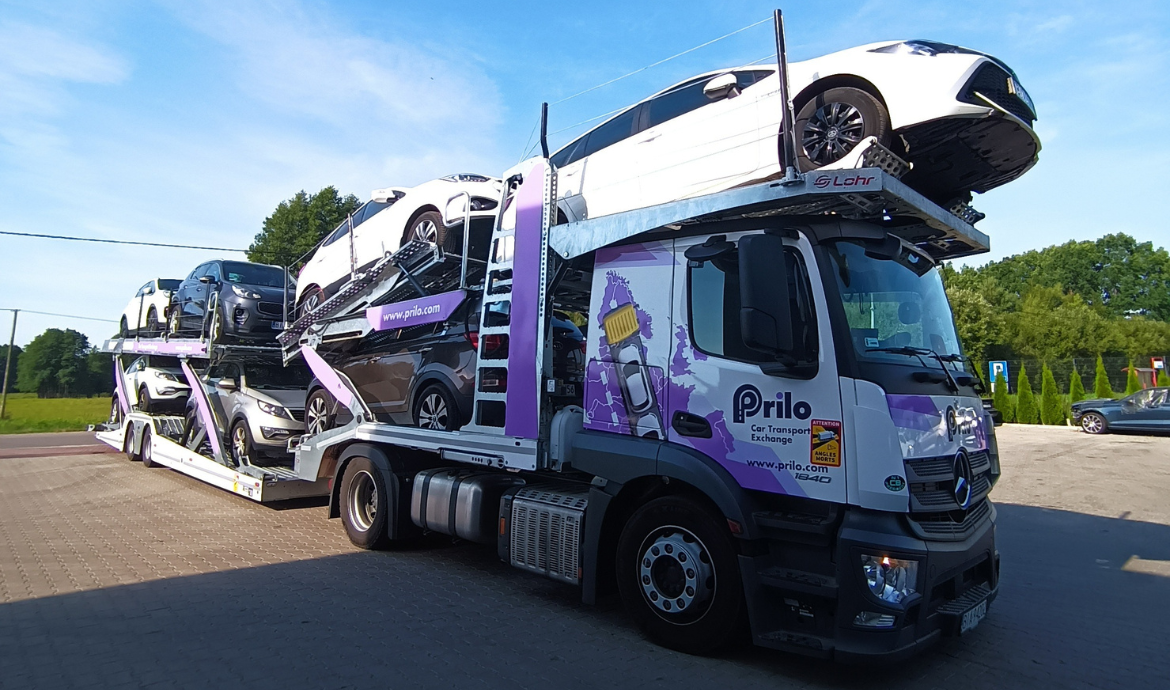
Cabotage transport – what is it and how is it carried out
Cabotage is a concept known mainly by companies dealing with international transport. The name itself comes from the Italian sailor Giovanni Cabot, also known as John Cabot. He went down in history thanks to geographical discoveries and coastal shipping, sailing between different ports of the same country. What is cabotage? How is it different from other forms of transport? Read on to find out.
Table of contents
What is cabotage transport?
Cabotage transport is the commercial transport of a load between collection points located in a country other than that in which the carrier is established. Sounds complicated? Let’s illustrate cabotage using a specific example. A Polish transport company carries out the transport of a load between Poznań and Dortmund. Loading takes place in Poland, and unloading in Germany. Then, when the vehicle is empty, it is loaded and transported again. This time the driver transports goods from Dortmund to Berlin. Thanks to this, the so-called empty runs and the economic aspect of the transport itself are improved. The important thing in this case is that the first transport is international in nature, while the next one is performed on the territory of one country – other than the country where the carrier is headquartered. A simple conclusion can be drawn from this, i.e. a transport company registered in Poland cannot carry out cabotage on the territory of the Republic of Poland. It simply clashes with the definition of cabotage. One more aspect is worth noting here. Transport under cabotage may only be carried out with the vehicle used by the carrier to cross the border.
What is cabotage?
The concepts of cabotage and cabotage transport are used interchangeably. In fact, the term cabotage is more general and covers two different types of transport. In common parlance, cabotage is simply called coastal shipping. For this is how Giovanni Cabot traveled in the 15th century. In turn, the legal definition of cabotage transport was included directly in the regulation of the European Parliament and of the Council and reads as follows: domestic commercial transport performed temporarily in the host Member State.
Types of cabotage
- Maritime cabotage – sea transport between the ports of one country
- Cabotage transport – can be carried out by rail, plane or car
Which national regulations pertain to cabotage?
- The Road Transport Act of September 6, 2001
- Regulation of the Minister of Infrastructure and Development of April 3, 2014 on permits for the international carriage of goods by road and cabotage transport
- Regulation of the Minister of Transport, Construction and Marine Economy of 6 August 2013 on the amount of fees for administrative activities related to road transport, examinations and issuance of certificates of professional competence
- Code of Administrative Procedure of June 14, 1960
Who needs a permit to carry out cabotage in Poland?
Foreign entrepreneurs who want to provide cabotage services in Poland are required to obtain the appropriate permit if:
- their company is based outside the EU, Switzerland, Norway, Iceland, Liechtenstein
- transport is to be carried out using a vehicle registered outside the EU, Switzerland, Norway, Iceland and Liechtenstein.
The application should be submitted to the General Inspectorate of Road Transport in Warsaw.
Who can perform cabotage?
Cabotage can be performed by any entrepreneur who, in accordance with the provisions of law, carries out the commercial road transport of goods. Thus, they must have a registered business in one of the EU or EFTA member states and a license for international transport. Usually, cabotage is carried out by trucks but regulations also allow for smaller vehicles, such as delivery vans, with a permissible total weight not exceeding 3.5 tons.
Cabotage ban – in what situations is it imposed?
Pursuant to Art. 19 of the Road Transport Act, General Inspectorate of Road Transport may, by way of an administrative decision, impose a ban on cabotage transport in the territory of the Republic of Poland if the carrier has repeatedly violated the provisions of Regulation (EC) No 1073/2009 or other Community or national road transport regulations. These violations do not have to be strictly related to cabotage, while the ban is valid for a period of 2 years.
How is cabotage transport regulated?
The rules for cabotage transport throughout the European Union are stipulated in the Regulation of the European Parliament and of the Council No. 1072/2009, in force since 2009. Cabotage is possible only when international transport is performed first and a CMR document has been issued for it. Certain legal changes in cabotage transport were introduced in 2022 through the so-called mobility package. Here are the most important of them:
- the number of cabotage trips within 7 days in one EU country has been limited to 3
- it is now required to document the return to the carrier’s headquarters once every 8 weeks, even if it means a trip without a load
- the 4-day break since the last cabotage must be documented
- combined transport on the basis of cabotage can be performed, as long as it takes place on the territory of one of the EU Member States.
Benefits and drawbacks of cabotage
Cabotage transport is still very popular among transport companies. However, legal regulations are increasingly limiting the possibilities that carriers have at their disposal. As it often happens in life, those who are resourceful and looking for new orders, even on short routes, will come out on top.
Cabotage transport drawbacks
- Threat to local carriers
- Risk of exploitation by transport companies and damage to the market
Cabotage transport benefits
- Financial optimization of journeys by reducing the length of routes without loads
- Limiting the negative impact on the natural environment
- More favorable prices
- More choice for the potential customer using the services of cabotage companies
- Possibility for the carrier to obtain additional income difficult situations
Excessive cabotage is subject to severe sanctions. This stems from the desire to protect the interests of local transport companies. It cannot be the main source of income for enterprises, as it would significantly reduce the appeal of carriers from countries with higher wages, and hence higher transport costs. However, cabotage transport has a real impact on the reduction of harmful exhaust emissions into the atmosphere and is an occasional opportunity to reduce costs related to transport. That is why they are so popular.



